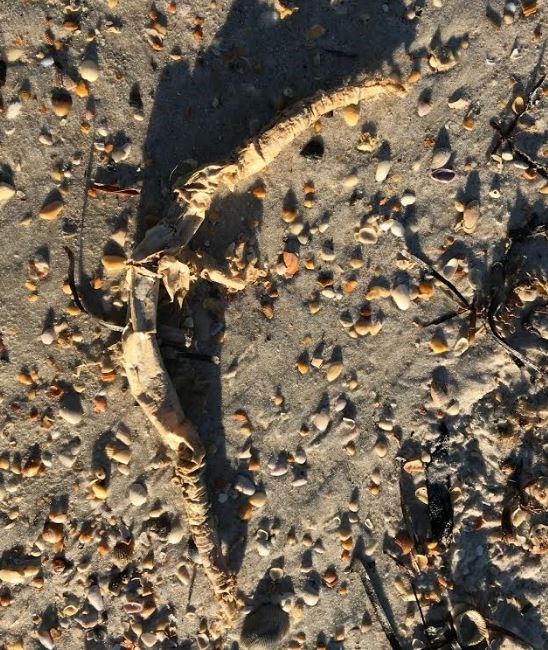
people can say they have seen the parchment tube for which the animal is commonly named. But even if they have seen the worm’s parchment tube lying on the beach, most people probably mistook it for a piece of refuse. Even if they touched it they probably still thought it a bit of washed up trash, because to the touch it feels like a piece of wet paper. But in actuality these whitish, limp tubes, which can be up to twelve inches in length, are produced by the worm itself as it lies buried in sand or mud, just below the surface around the low-tide line. Prior to storms dislodging the tubes and washing them up on the beach, they are buried in a U-shape so that the two ends both protrude above the surface, with the worm itself nsconced in the low end of the tube. From its position and when the tides are up, the worm uses paddle-like structures attached to its body to create a flow of water through its tube. By secreting a mucous film the worm is able to trap very small organisms (plankton, protozoans) that are carried in with the artificial current and eat them. After digestion the fecal remains are pumped out the other end of the tube to fertilize the surrounding habitat. As the worm lives and grows over the span of about a year, it can increase the length and width of its tube as needed. Parchment tube worms live in warm temperate to tropical regions worldwide. When it comes time to reproduce, the females release hundreds of thousands to over a million eggs into the water where spawning occurs. Fertilized eggs become larvae which are planktonic until they settle out and begin their adult life as a worm. While some crab species live commensally within the worm tubes, gaining protection and a planktonic food source, other crustaceans and fish prey upon the worms. In defense, parchment tube worms can bio-luminesce if they are disturbed, which may startle and scare off would-be predators. If worse comes to worst these worms, like some other worm species, are able to regenerate their bodies if they lose a segment in an attack. One of the great things about beach combing is that the items found washed up on the shore usually have a story to tell. That is definitely true of the parchment tubes lying on the beach after a storm. Though they may look like an unappetizing piece of litter at first glance, upon closer inspection they turn out to be the “calling card” of yet another of nature’s fascinating creatures. |
Last updated: June 28, 2023
